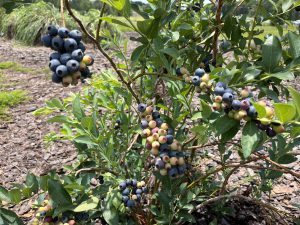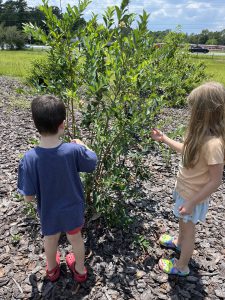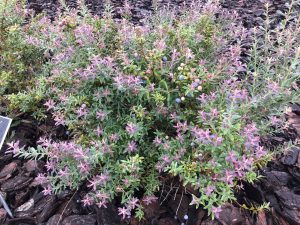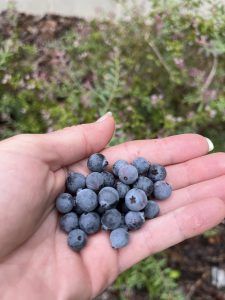
Edible ornamental landscaping is the combination of edible and non-edible ornamental plants. Selecting and maintaining plants according to the Florida-Friendly Landscaping principles can provide an edible ornamental landscape that is attractive, hardy, and productive without needing much maintenance including irrigation, fertilizing or chemical pesticides.

One excellent edible ornamental plant that is garnering a lot of attention right now are blueberries. It’s blueberry season and my children and I are loving it. The blueberry is actually a native crop to the southeastern United States, including Florida. The two types of blueberries grown for crop production are southern highbush and rabbiteye. Southern highbush cultivars produce blueberries earlier in the season but are therefore more prone to freeze damage than the later rabbiteye cultivars. The blueberries we have growing at our demonstration garden are rabbiteyes. The rabbiteye blueberries produce fruit later in the season so they’re more cold hardy and are also very long lived. Select low-chill varieties for optimal fruit production and plant your blueberries in a sunny area with good drainage and acidic soils. Most blueberries are not self-pollinating so you will need at least two plants that are two different cultivars of the same type (southern highbush or rabbiteye). The two rabbiteye cultivars growing at our demonstration garden are ‘Climax’ and ‘Woodard’ and wow are they loaded with big sweet berries now!

For added color and diversity in your edible ornamental landscape, also consider planting the native Darrow’s blueberry (Vaccinium darrowii) or shiny blueberry (Vaccinium myrsinites) that only grow about 2 feet tall and wide, are evergreen with lovely purple-colored new foliage, and produce tiny but sweet blueberries. Instead of an ordinary ornamental hedge, we planted a row of Darrow’s in front of our house with native faxahatchee grass and purple Stoke’s aster along with non-native purple and blue Brazilian salvias. The effect of the purple foliage of the blueberries with the purple blooms from the ornamental flowers is quite attractive. Not only do the pollinators and hummingbirds love it, but we also get to enjoy loads of sweet blueberries every spring and summer.

To learn more about edible ornamental landscaping, see the Edible Ornamental Landscaping Guide for North-Central Florida, or for more information on blueberries, visit the Blueberry Gardener’s Guide.
 1
1
